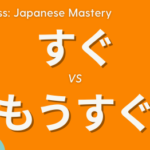Understanding the Difference Between “友達” (Tomodachi) and “友人” (Yuujin)
Both “友達” (tomodachi) and “友人” (yuujin) translate to “friend” in English, but did you know they are used in different situations? You might be wondering if “友達” (tomodachi) is more casual and “友人” (yuujin) has a more formal tone. Can the choice of word change the impression you give?
Both terms refer to people with whom you share a close bond, but there’s a subtle difference in nuance. If you’re just beginning to study Japanese, it might be challenging to grasp this distinction.
In this blog, Eri-san from JPLT Online Japanese Language School will explain the difference between these two words in detail.
The Difference Between “友達” (Tomodachi) and “友人” (Yuujin)
- 友達 (Tomodachi)
- This is a casual expression.
- It often refers to people you spend time with regularly and have a close relationship with.
- It is used across a wide age range, from children to adults.
- Examples:
- 私の友達 (tomodachi) はサッカーが得意です。
My friend is good at soccer. - 毎日一緒に学校へ行く友達 (tomodachi) がいます。
I have a friend I go to school with every day.
- 私の友達 (tomodachi) はサッカーが得意です。
- 友人 (Yuujin)
- This is a slightly more formal expression.
- It still indicates a close relationship, but there may be a bit more distance than with “友達” (tomodachi).
- It is often used in business settings or in writing, where a more polite expression is needed.
- Examples:
- 大学の友人 (yuujin) が最近結婚しました。
A university friend of mine recently got married. - 彼は私の大切な友人 (yuujin) です。
He is an important friend of mine.
- 大学の友人 (yuujin) が最近結婚しました。
Which One Should You Use?
- In casual situations, “友達” (tomodachi) is commonly used, while “友人” (yuujin) is preferred in more formal contexts.
- You can also choose based on the level of intimacy:
- Use “友達” (tomodachi) for very close relationships and “友人” (yuujin) when there’s a slight distance.
- Age can also influence your choice:
- Among children, “友達” (tomodachi) is more common, while adults may use “友人” (yuujin) more frequently.
Summary
| Word | Nuance | Usage |
|---|---|---|
| 友達 (Tomodachi) | Casual, close | Everyday conversation, among friends |
| 友人 (Yuujin) | Formal, close but with some distance | Business, writing, among adults |
Let’s Look at Some Examples
- 「昨日、友達 (tomodachi) と遊園地に行ったよ。」
(I went to the amusement park with a friend yesterday.)
Casual conversation - 「彼は私の大学の友人 (yuujin) で、今は別の会社で働いています。」
(He is a university friend of mine and now works at a different company.)
Slightly formal conversation
Diving Deeper
- The term 親友 (shinyuu) also exists, which refers to a particularly close friend.
- Sometimes, instead of “友達” (tomodachi), the word 仲間 (nakama) is used.
- The word “友人” (yuujin) is a translation of the foreign word “friend.”
Frequently Asked Questions
- Which is correct?
- “友だち” or “友達”?Both are correct in Japanese. “友だち” is the older form, but “友達” is more commonly used today.
Practice Exercise
Fill in the blanks with either “友達” (tomodachi) or “友人” (yuujin):
- 私は毎日、___とLINEで連絡を取り合っています。
(I keep in touch with my ___ on LINE every day.) - 大学の卒業式で、たくさんの___と写真を撮りました。
(I took many photos with my ___ at the university graduation ceremony.) - 彼は私の大切な___です。いつも相談に乗ってくれます。
(He is an important ___ of mine. He always gives me advice.)
Answers:
- 友達 (tomodachi)
- 友人 (yuujin)
- 友人 (yuujin)
Final Thoughts
Mastering “友達” (Tomodachi) and “友人” (Yuujin) in Japanese!
While both “友達” (tomodachi) and “友人” (yuujin) mean “friend,” the situations and nuances in which they’re used differ. Understanding this difference is crucial in mastering Japanese. “友達” (tomodachi) is a casual term often used in everyday conversations to describe someone close to you, such as classmates or people you hang out with regularly. On the other hand, “友人” (yuujin) is a more formal term used in business settings or when you need a more polite expression. It’s also used when referring to friends with a bit more distance, like a university friend who is now working in a different company.
By practicing the use of “友達” (tomodachi) and “友人” (yuujin) appropriately, you’ll be able to speak more natural Japanese. For instance, in everyday conversation, you’d say, “昨日、友達と遊園地に行ったよ。” (I went to the amusement park with a friend yesterday.) But in a more formal context, you’d say, “彼は私の大学の友人で、今は別の会社で働いています。” (He is a university friend of mine and now works at a different company.)
Beyond “友達” (tomodachi) and “友人” (yuujin), there are many other words to describe people, such as “仲間” (nakama) and “親友” (shinyuu). Understanding the meanings and uses of these words will allow you to express yourself more richly.
Consistent practice is key in learning Japanese. Try using “友達” (tomodachi) and “友人” (yuujin) in various situations to get a feel for them. If you’re unsure about anything, don’t hesitate to ask your teacher or friends.
Let’s continue learning Japanese together and enjoy the journey!
At [JPLT Online Japanese Language School], experienced Japanese instructors are here to support your Japanese learning journey. With one-on-one lessons, you can easily ask any questions you have.




